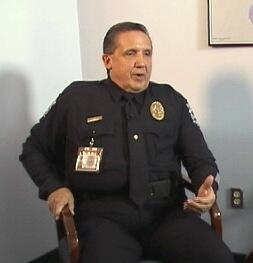Charlotte-Mecklenburg Schools' beefed-up menu of options for 2014-15 drew more than 24,000 students for the first lottery, with 20,287 of them getting assignments at requested schools,
newly posted lottery results show.
The report shows some new offerings, such as a high school on the UNC Charlotte campus and tech-oriented magnets for lower grades, opening with strong interest. Many perennial favorites remain popular. But enrollment continues to slump at some struggling magnets, such as Marie G. Davis Military/Leadership Academy and Harding High's IB program. And it looks like some new programs, including a middle college high at CPCC's Harper campus and a Montessori school at Long Creek, will have to keep recruiting to be ready to open in August.
 |
| Morehead STEM remains popular |
Before the details, a caution: A lot can change between now and August. Many families apply for CMS magnets, charter schools and/or private schools to see what their options are before making a decision. Some students who got seats in magnets may fail to meet the admission requirements. CMS will keep recruiting for underfilled programs. We'll hear more about upcoming plans at a Wednesday news conference.
Cotswold Elementary's IB magnet appears to be the toughest to get into, with 238 waiting for only 190 seats that were filled. Morehead STEM, a K-8 magnet, has the longest waiting list, with 668 waiting and 1,180 seated.
The new early college high based at
UNCC's energy and engineering center had originally planned to open with 65 ninth-graders in August. Instead CMS placed 100 ninth-graders, with 94 on the waiting list. Students will be able to attend up to five years of high school and receive two years of tuition-free college credit along with their diplomas.
Students will have a similar option at three middle college high schools at Central Piedmont Community College, although these schools are open only to 11th- and 12th-graders. Cato, the model for the two new clones, filled 220 seats with nine students waiting. But only 14 were seated at Harper Middle College and 55 at Levine Middle College.
A new health sciences magnet at Hawthorne High pulled 87 students. CMS had hoped to have about 250 students at Hawthorne, which is transitioning from an alternative school to a magnet, but the current list shows only about 160 including the nonmagnet students.
A STEM (science, technology, engineering and math) magnet in the new elementary school opening in the southwest Pallisades area filled its 150 seats and has 63 waiting.
Cochrane Middle School's new iMeck Academy drew 152 students, and McClintock Middle's new STEAM Academy (that's STEM plus arts) pulled 107. Coulwood's new STEM magnet, which was created partly to offset the loss of sixth-graders who will stay at Mountain Island Elementary as it becomes a K-8 school, drew only 38 sixth-graders. CMS had hoped for 150.
One has to wonder: Has the high-tech craze sapped enthusiasm for other options?
CMS' existing Montessori schools drew hefty waiting lists, as usual. The new Long Creek Montessori, opening as a separate school next to the neighborhood elementary on the same Huntersville property, drew 50 prekindergarteners and 37 kindergarteners, but only five students for grades 1-3 (oddly, the list says there's one first-grader placed and five on the waiting list).
Northwest School of the Arts, a 6-12 magnet with a long tradition and national reputation, slipped in this year's lottery. Only 48 sixth-graders applied, down from 99 last year, with the total seated slipping from 941 to 854. Update: Student placement director Scott McCully says there's no decline in applications. Students who apply must audition to be admitted, he said, and that has gone more slowly than in past years. Once applicants complete their auditions, he said, the number of sixth-graders will rise.
The "hub" plan for high school students to transfer into North Mecklenburg High for career-tech programs didn't get much interest. Seven each applied for seats in the cosmetology and culinary arts programs, two for automotive, one for horticulture and none for carpentry.
Marie G. Davis Military/Leadership Academy, a K-12 magnet that has long struggled to attract students to the school south of uptown Charlotte, had 701 students seated, down from 847 in last year's lottery. Only 12 kindergarteners and 39 first-graders applied, compared with 34 kindergarteners and 82 first-graders last year.
East Meck now has the largest high school IB magnet with 1,009, up from 845 in last year's first lottery. North Meck is second at 615, also up slightly. Harding's IB magnet, which has been struggling since CMS ended the westside school's full-magnet status in 2011, drew 297 students, down from 393 last spring and 744 in 2010. West Charlotte IB is holding steady with 231.
Myers Park High still has an IB program, but since it stopped taking students from outside the attendance zone it isn't part of the lottery. Likewise, there's no listing for Olympic's new Advanced Manufacturing and Entrepreneurship school because it's an internal assignment for students living in the Olympic zone.
As noted, we'll have a chance to hear more from CMS officials on Wednesday, so if you see interesting patterns or have questions, please post them.








